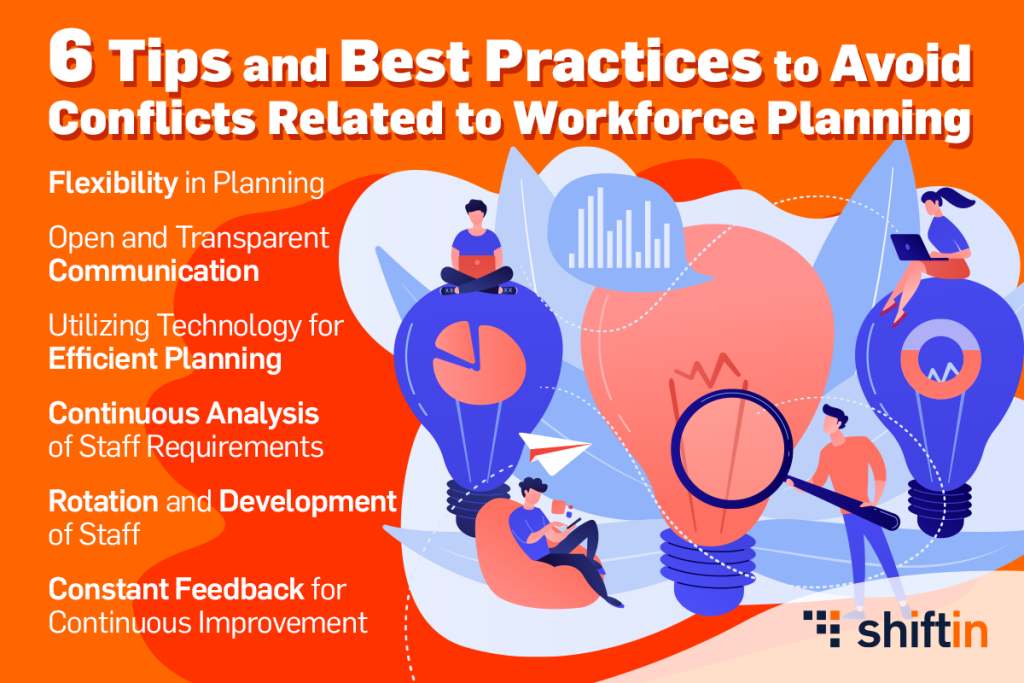Streamlining Workforce Planning for a More Productive Organization
Workforce planning is an essential component for the success of any organization. In the following, we will explore the best practices and tips to avoid conflicts related to workforce planning.
The Importance of Effective Workforce Planning
Efficient workforce planning contributes to increased productivity and efficiency within the organization. A rigorous introduction of this practice ensures optimal distribution of human resources, minimizing the risk of staff overload or resource underutilization. Therefore, a solid understanding of the importance of workforce planning is essential for everyone involved in managing an organization.
Practical Tips for Successful Workforce Planning
Flexibility in Planning
Provide employees with some flexibility in setting their schedules where possible. This not only improves employee satisfaction but also reduces the risk of scheduling conflicts, considering the various personal and professional needs of individuals.
Open and Transparent Communication
Diminish any ambiguity by ensuring open and transparent communication. Human resource managers and team leaders should provide clarifications regarding planning processes and address employee questions to avoid misunderstandings.
Utilizing Technology for Efficient Planning
Opt for advanced technological solutions to manage workforce planning. Solutions such as automated shift scheduling software can facilitate efficient and error-free workforce planning.

Avoiding Conflicts through Process Optimization
Continuous Analysis of Staff Requirements
A proactive approach involves a continuous analysis of staff requirements. With the help of analysis and reporting tools, organizations can anticipate peak periods and adjust planning accordingly.
Rotation and Development of Staff
Encourage staff rotation to avoid feelings of monotony and to diversify team skills. Motivated individuals are less prone to conflicts and contribute to a harmonious working environment.
Constant Feedback for Continuous Improvement
Maintain an open feedback channel to identify and promptly resolve any issues related to scheduling. Implement changes based on received feedback to ensure continuous improvement in workforce planning.
By implementing these tips and best practices, organizations can efficiently manage workforce planning, reducing the risk of conflicts and improving productivity. In this context, solutions like shiftin offer an additional advantage, facilitating the automation of the process and bringing significant benefits. Make sure to explore all available options to ensure that workforce planning becomes a driving force for the success of your organization.





